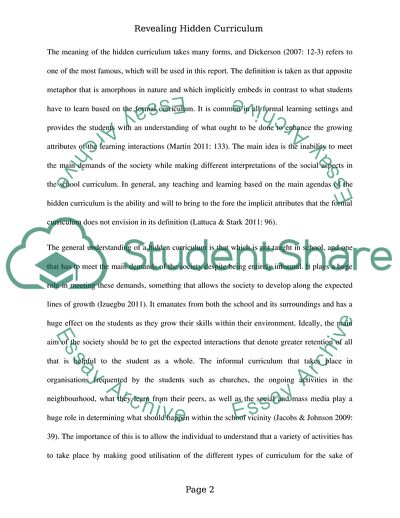Cite this document
(Revealing Hidden Curriculum Essay Example | Topics and Well Written Essays - 1750 words, n.d.)
Revealing Hidden Curriculum Essay Example | Topics and Well Written Essays - 1750 words. https://studentshare.org/education/1870807-how-can-the-hidden-curriculum-be-revealed
Revealing Hidden Curriculum Essay Example | Topics and Well Written Essays - 1750 words. https://studentshare.org/education/1870807-how-can-the-hidden-curriculum-be-revealed
(Revealing Hidden Curriculum Essay Example | Topics and Well Written Essays - 1750 Words)
Revealing Hidden Curriculum Essay Example | Topics and Well Written Essays - 1750 Words. https://studentshare.org/education/1870807-how-can-the-hidden-curriculum-be-revealed.
Revealing Hidden Curriculum Essay Example | Topics and Well Written Essays - 1750 Words. https://studentshare.org/education/1870807-how-can-the-hidden-curriculum-be-revealed.
“Revealing Hidden Curriculum Essay Example | Topics and Well Written Essays - 1750 Words”. https://studentshare.org/education/1870807-how-can-the-hidden-curriculum-be-revealed.


